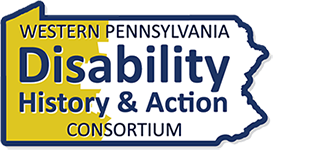
The Council of Three Rivers American Indian Center (COTRAIC) was established in 1969 by several Native American families living in Pittsburgh. The initial focus was to provide cultural support to “off-reservation” families living in the Pittsburgh Standard Metropolitan Statistical Area and surrounding counties. When COTRAIC incorporated as an official nonprofit organization in 1972,[1] it expanded its mission to address the socio-economic needs of Indigenous people who were often underserved by existing community support programs. Accessing culturally relevant services was a struggle at that time.
By the early to mid-1980s COTRAIC recognized that many non-Native Americans in the local population were similarly disadvantaged and shared some of the same challenges as the Native American community. As a result, COTRAIC expanded its mission. Today, the organization offers services and programs to Native and non-Native children and adults, while maintaining a focus on Native culture. COTRAIC’s mission statement reflects this scope:
“To promote the socio-economic development of the Native American community and others who experience similar types of economic difficulties in the Greater Pittsburgh metropolitan area.”[2]
COTRAIC has many programs, ranging from employment training to elder services, as well as a food pantry. Two key efforts highlight ongoing work that specifically supports the disability community: Inclusive Head Start, Early Head Start and Pre-K classrooms, and mental health-focused programming.
According to the organization’s 2021 annual report, 27 COTRAIC Head Start, Early Head Start and Pre-K classrooms served a combined total of 312 children in that program year.[3] COTRAIC Mental Health and Disability Specialist Sara Witmer, a 19-year COTRAIC staff member and a 12-year veteran Head Start teacher, estimates that approximately 25% of students need some form of disability support.[4] She describes the evolution of the integrated disability support classrooms established in the 1990s as follows:

“We have always looked at everybody as worthy of an education, and the best possible start in life. We used to have a small number of Mosaic classrooms.[5] [Mosaic classrooms represent a rich variety of learning spaces that meet widely varying instructional needs with a mix of children with disabilities and typically developing peers.] Initially, there were two Head Start teachers in the room, and two itinerant teachers staffed by Pittsburgh Public Schools, and that was the model that we used for our inclusion.”
Now,” she says, “every classroom has children with disabilities, and we partner very closely with Alliance for Infants and Toddlers, or Pittsburgh Public Schools, or – in some of our centers that are not in the city – DART [Early Intervention Program of the Allegheny Intermediate Unit] to make sure that all of the accommodations are in place, so that children with disabilities are included in all of the activities offered across all service areas. Making sure that the accommodations are put in place as soon as possible so that we can reshape the neuron pathways so that [students are] able to move on to kindergarten, sometimes without support, is the most amazing thing. We see these kids come in as three-year-olds, and they may have a speech therapist, a developmental therapist, and occupational therapist. We put in all the work, and by the time they go off to kindergarten they don’t need it anymore. It’s really magical to see that progression.”
Witmer and her COTRAIC colleagues don’t stop there, however. “We work really hard to end the stigma around mental health while trying to be culturally sensitive to the people with whom we’re working. We’ve really struggled in the last couple of years with waiting lists, and having enough services to meet the growing need. We have a mental health consultant who helps us to facilitate referrals to intensive behavioral health services, or whatever the child or family may need, and we’ve had more luck with family-based services, parent-child interaction therapy, or family-based therapy with the family as a whole.”
COTRAIC is far from alone in the struggle to connect people in need with mental health services. The American Psychological Association anticipates that the need for more psychological care will only continue to grow as open dialogue around mental health continues to become more socially acceptable in a post-COVID world. This awareness leads not only to an increased demand for mental health services, but an increased focus on the flaws in our existing healthcare system, such as racial bias in care. This may further limit access for some people, including non-white community members. Insufficient mental health services can also have negative outcomes on children and youth.[6] What then is the solution?

“Removing the barriers to services,” says Witmer. “For example, waiting lists and transportation. Having services within the community, so that they’re easily accessible. Having diverse staff, so that when people are trying to access these services, they see people who look like them and feel welcome, included, and seen.”
Local non-profit service providers like COTRAIC can only get so far on their own. “Funding is always an issue,” Witmer explains. “That’s definitely something that at the state level could be improved. There are more and more expectations of what should be done, and how it should be done. Providing therapeutic family services workers and other direct service professionals a livable wage is important. There are just not enough people to fill those roles, and there is a high demand for it.”
Finding additional funding in an economy struggling with rising inflation is a tough task, but not impossible. According to Witmer, the best way to get there is by “putting more focus on ending the stigma, and really educating, and making sure that politicians and the people that we’re electing have an understanding of diversity, inclusion and equal rights.”
“We try really hard to make it so that everybody is welcomed, and every culture is celebrated, and nobody feels left out or marginalized by the services that we provide,” she continued. “I try really hard to educate families to see that a concern that might come up on a screening that might indicate a disability does not define the child, and it does not take away from how great they are. It just opens up doors for services to get them the support and the assistance that they need, so that they can succeed in school and in life.”
If you would like to learn more about COTRAIC, their programs, and ways you can support their efforts, you can visit their website at: www.cotraic.org.
References
[1] Council of Three Rivers American Indian Center, Annual Report 2021. “Agency History”, Pg. 2.
[2] https://www.cotraic.org/about. Last accessed 3/18/2023.
[3] Council of Three Rivers American Indian Center, Annual Report 2021. “Early Childhood Education” Pg. 15-16.
[4] Sara Witmer interview transcript. Interview conducted 3/10/2023.
[5] https://mosaic.iu.edu/about/Classrooms.html. Last accessed 4/2/2023.
[6] “APA Special Report 14 emerging trends: The pandemic era has changed attitudes toward science and mental health” Published January 1, 2022. https://www.apa.org/monitor/2022/01/special-emerging-trends. Last accessed 3/18/2023.


